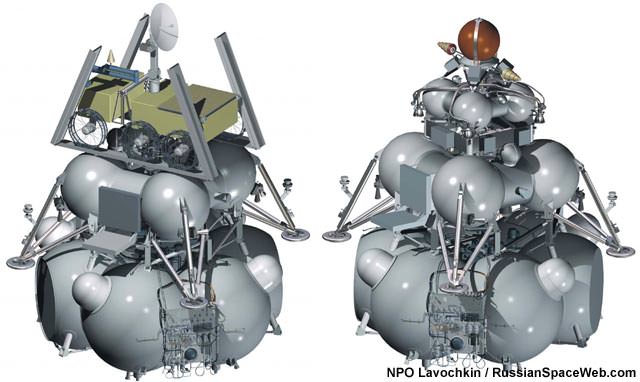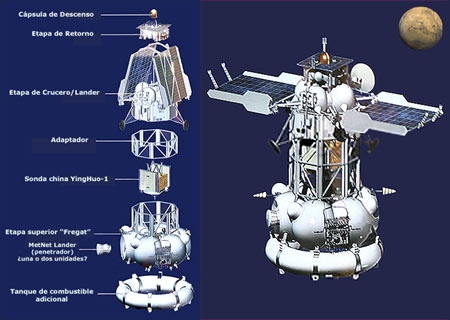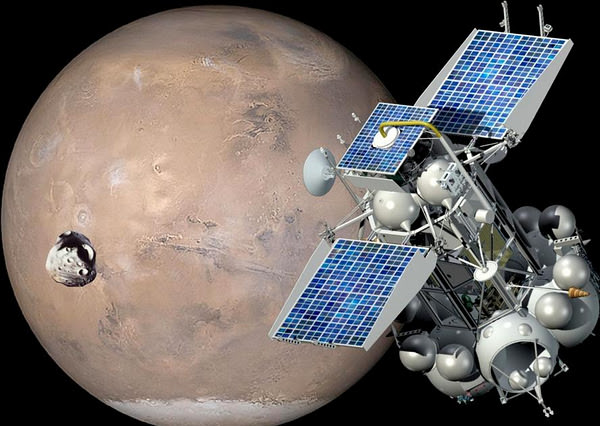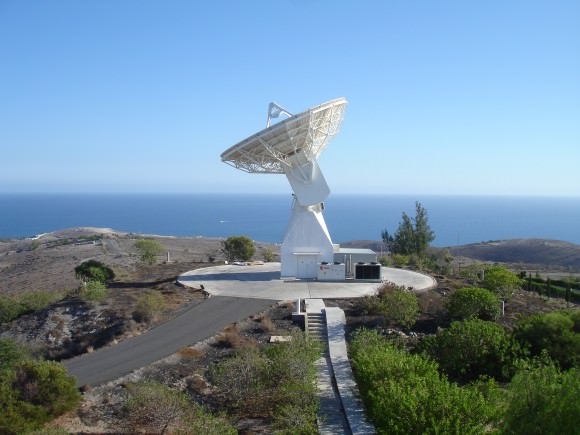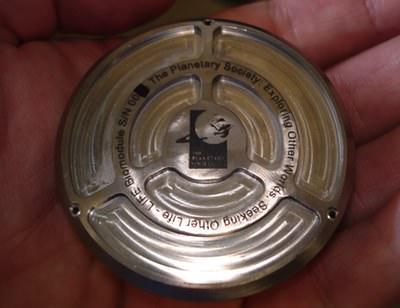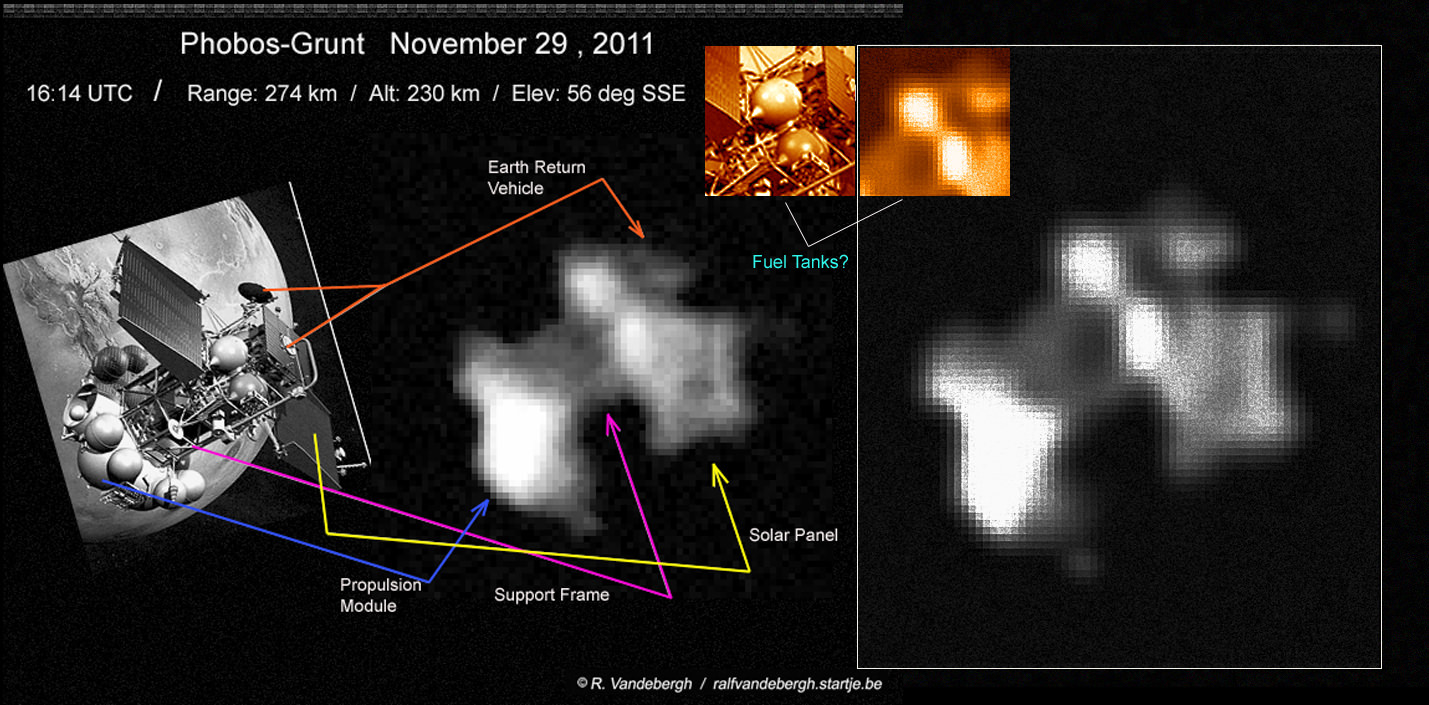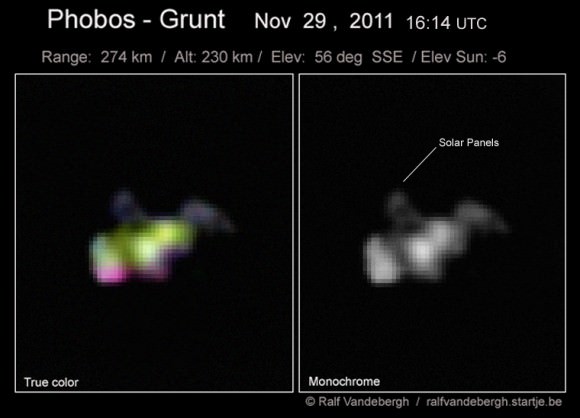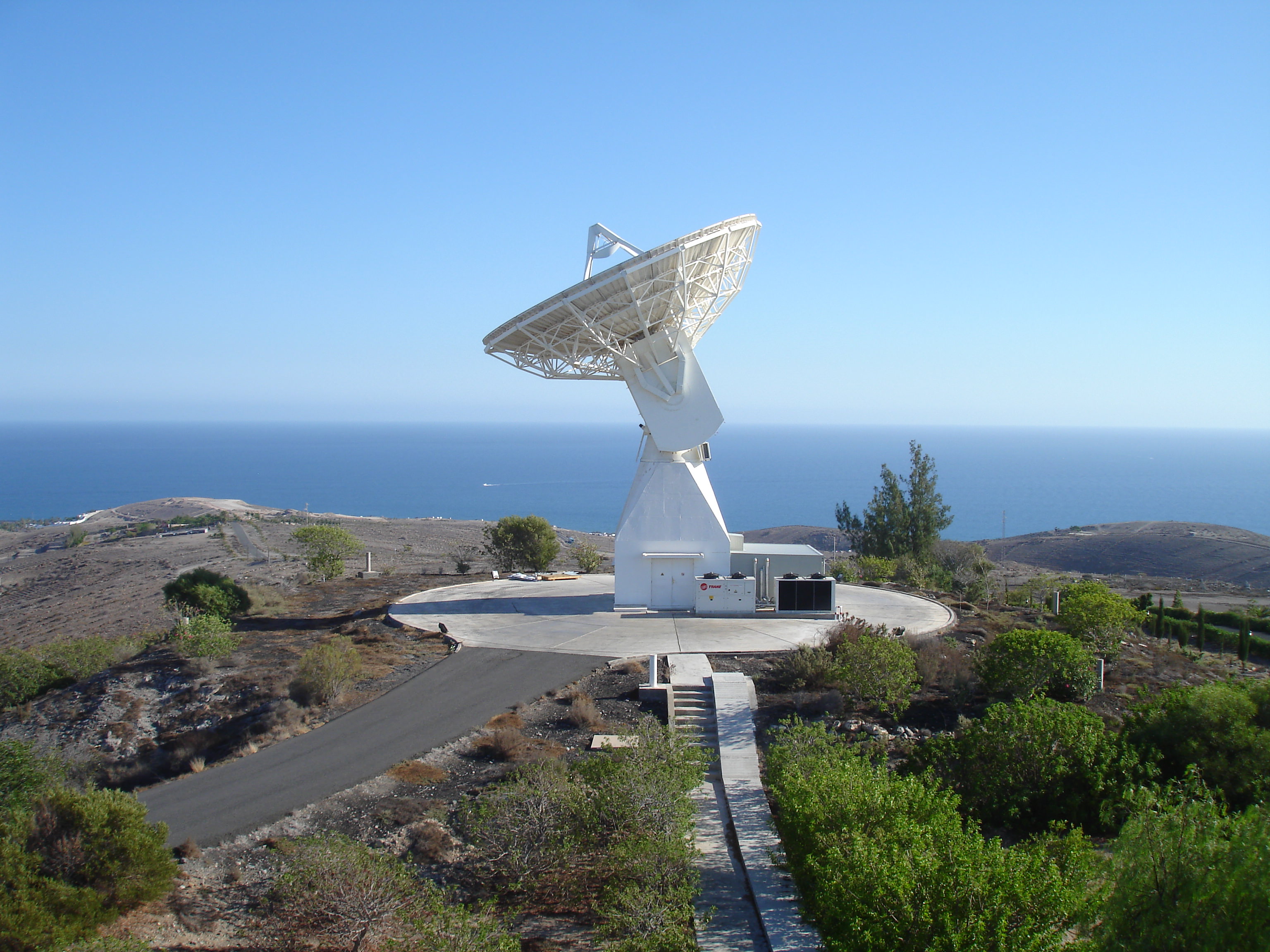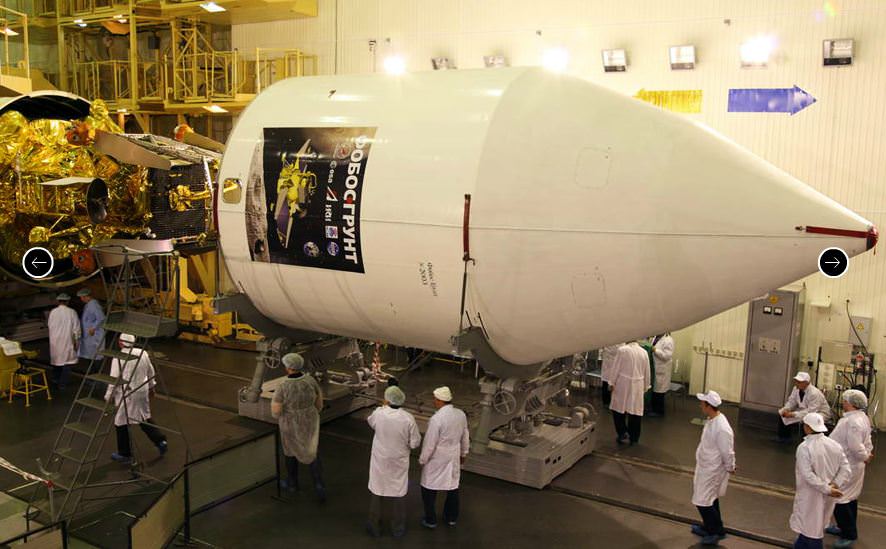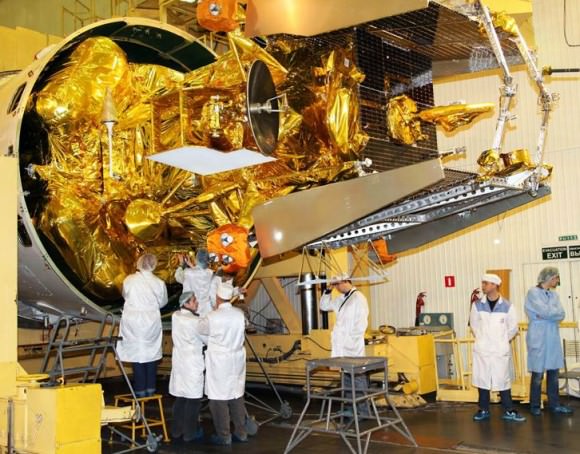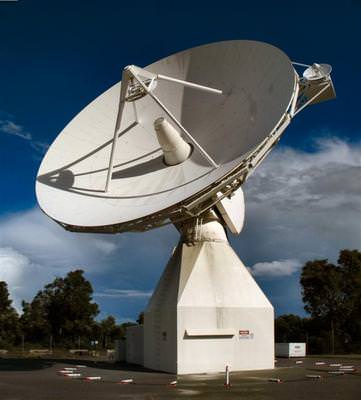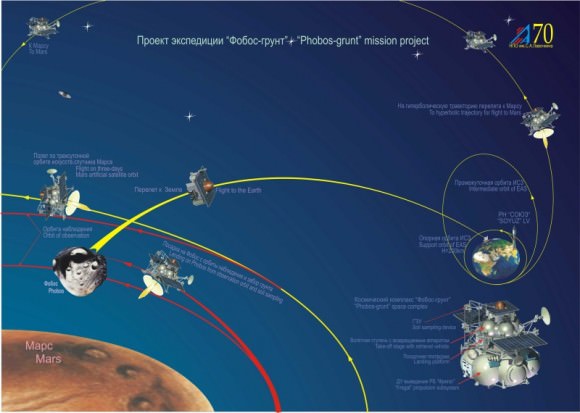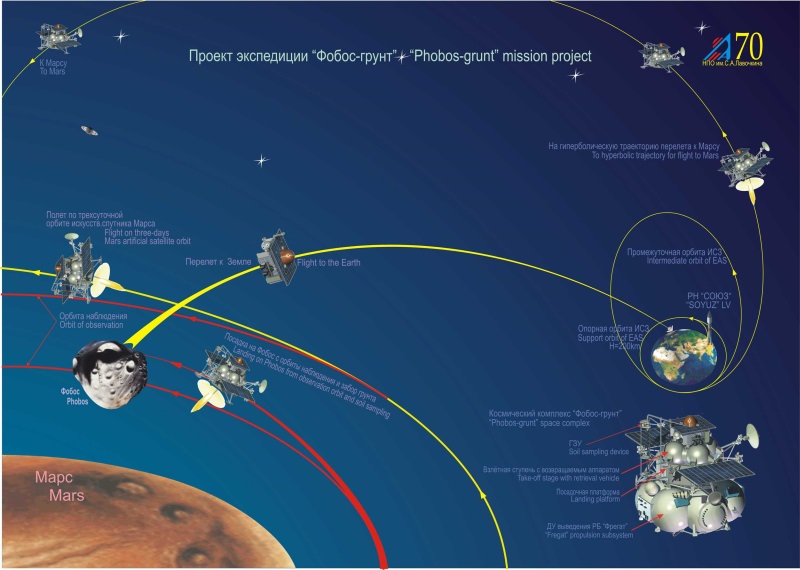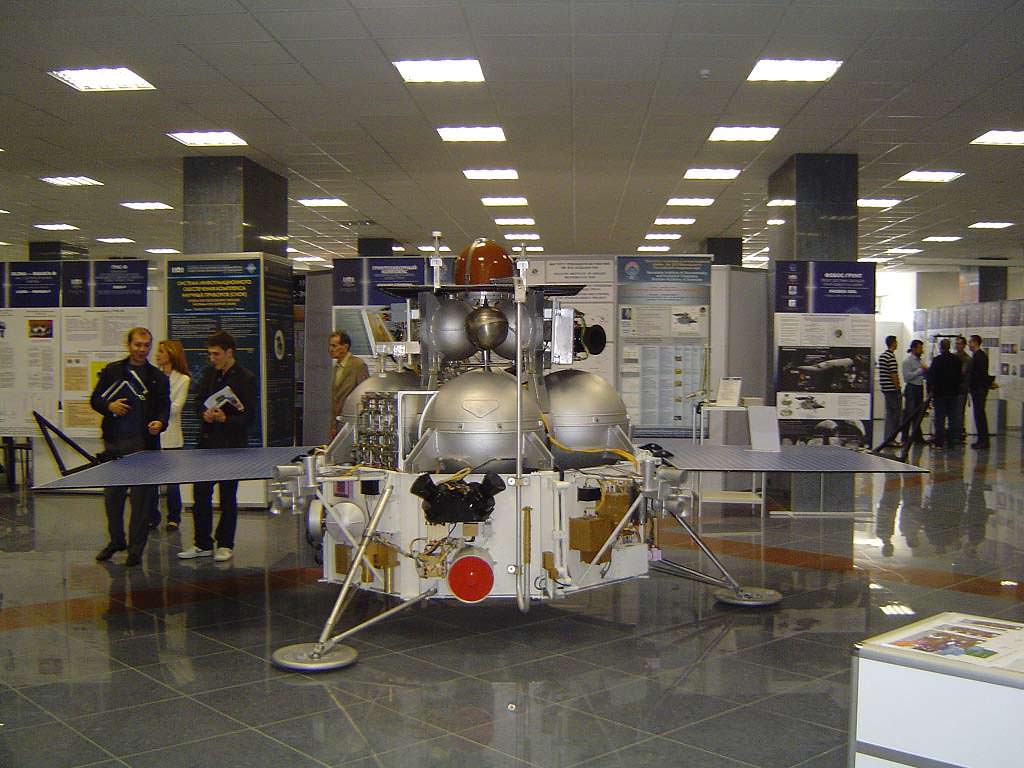[/caption]
Editor’s note: Dr. David Warmflash, principal science lead for the US team from the LIFE experiment on board the Phobos-Grunt spacecraft, provides an update on the mission for Universe Today.
While the Russian Federal Space Agency (Roscosmos) prepares for the pending destruction of its Phobos-Grunt spacecraft, an ambitious program focusing on lunar exploration is moving to center stage. Although the Soviet Union launched three successful lunar sample return missions, the last such probe was Luna-24, in 1976.
Scheduled for launch in 2014 or 2015, Luna-Glob (Russian for lunar sphere) consists of two craft: Luna-Glob 1 and Luna-Glob 2 (also called Luna-Resource). In addition to carrying out various studies while orbiting the Moon, Luna-Glob 1 is to carry four probes known as penetrators. Built by Japan, the penetrators will be launched from lunar orbit, then slam into the lunar surface and take seismographic readings. Since similar readings were taken in the landing regions of NASA’s Apollo missions (after used stages of the vehicles were crashed on the Moon deliberately to shake it up), two of the penetrators will be aimed near the Apollo 11 and Apollo 12 landing sites. It is hoped that comparison of results with the seismic data that were collected in the 1970s from these and the other sites will answer questions regarding the Moon’s origins.
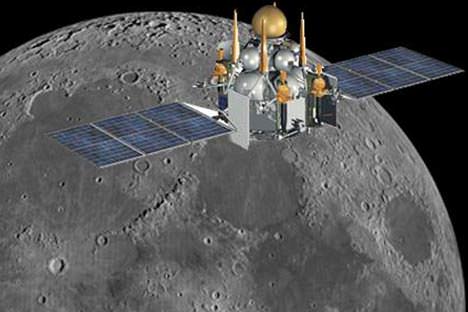
Previously, I’ve used the term Luna-Grunt in reference to a re-purposed Phobos-Grunt, sent to orbit Earth’s own Moon, if control is restored but too late to send it to the Martian moon Phobos. But Grunt is the Russian word for “ground,” or “soil.” Just as Phobos-Grunt was designed to analyze and return Phobosian regolith (not actually soil, but crushed rock and dust on the surface of a celestial body), Russia’s Luna-Grunt program will study lunar regolith. Currently, two Luna-Grunt spacecraft are planned, each featuring an orbiter and a lander. While the first Luna-Grunt lander, scheduled for a 2014 launch, will carry a rover loaded with instruments for regolith analysis, the second lander will feature an ascent stage with a sample return capsule. Designed to return to Earth, the Luna-Grunt capsule will be similar to return capsule of Phobos-Grunt, but will carry five times the amount of regolith (1 kilogram for Luna-Grunt vs. 200 grams for Phobos-Grunt).
Scheduled for launch in 2013 or 2014, Luna-Resource (Luna-Glob 2) will be a joint mission between Roscosmos and the Indian Space Research Agency. Like Luna-Glob 1 and Luna-Grunt 1, the main components will be a lunar orbiter and roving vehicle. Called, Chandrayaan-2, the rover will travel near one of the lunar poles for about a year. Luna-Resource is expected to provide valuable information concerning solar wind on the lunar surface. Like the other missions, it also carries instruments for analysis of the lunar regolith. Included in the analysis will be a search for water, which is thought to be present, particular in the Moon’s polar regions.
While the lunar missions to be launched during the next half decade will be unpiloted, statements by various Russian scientists and cosmonauts in recent months suggest that Roscosmos is interested in Earth’s companion as a location for a lunar base, or even a colony .

